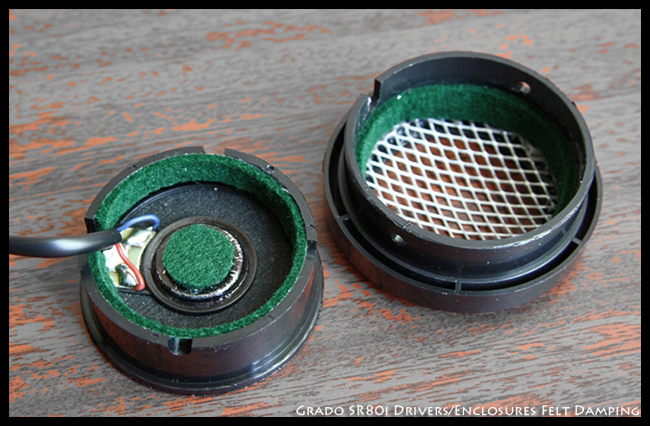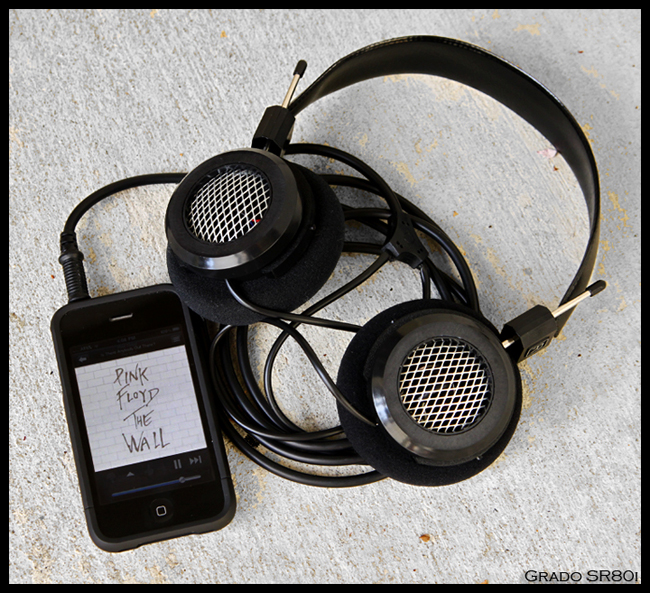Zombie_X
Headphoneus Supremus
You guys should do the damping mod I did. Simply glue foam in the inside of the cup, but a thin layer. Helps kill resonances and makes the headphone sound smoother.
| Originally Posted by Xan7hos /img/forum/go_quote.gif Bilavideo, how did your SR-60 sound without the cup? |
| Originally Posted by jageur272 /img/forum/go_quote.gif The cups on Grados are there to protect the drivers. They're supposed to be as open as possible while maintaining good sound. |
| Originally Posted by kontai69 /img/forum/go_quote.gif If one were to want maximal "openess," you would break off the plastic grill (the one inside the outer cup). You can replace the stock plastic grill with a metal more perforated one like the SR225 and higher models for protection. |
| Originally Posted by omendelovitz /img/forum/go_quote.gif Hi all, Once upon a time there were some posts about modding Grado drivers with some kind of sticky tack to mimic the tack seen in the higher end Grado cans. Searching for the threads here and on headwize has produced nothing useful. What I am looking for mainly is: 1) what type of stuffs to put on the back of the Driver's centrepiece (magnet I presume) . . . . |
| Originally Posted by Bilavideo /img/forum/go_quote.gif I bought some SR-80s off a guy. They were supposed to have a problem in the cables, a problem I could fix. Instead, they were unfixable and I paid $34 for a boat anchor. But where life closes a door, it opens a window, right? Well, I autopsied those phones - trying to fix them - and made some interesting discoveries, discoveries I wouldn't have made with phones I was worried about breaking. One of those discoveries was the nature of that centerpiece you spoke of. Is it the magnet? Yes and no. It's actually the magnet plate, for lack of a better term. The magnet fits right into it, which provides a place/space for the ribbon coil. I popped the assembly out, thinking this was a magnet with a groove cut into it. It was by chance that I got the two apart. The relationship between the magnet and the plate is much like that between a cup and saucer. When you dampen the plate, what you're doing is absorbing the vibrations so they don't become part of the sound signature. While the plate pops right out of the back of the driver assembly, there may be some extent to which this metal plate oscillates in response to the vibrations to which it, itself, is exposed. I don't know how much an undampened plate may add to the HF signature of the Grados, but damping it is relatively easy. Since there are already consumer products readily available, in the world of audio sound, your options are pretty much wide open. |




I bought some SR-80s off a guy. They were supposed to have a problem in the cables, a problem I could fix. Instead, they were unfixable and I paid $34 for a boat anchor. But where life closes a door, it opens a window, right?
Well, I autopsied those phones - trying to fix them - and made some interesting discoveries, discoveries I wouldn't have made with phones I was worried about breaking. One of those discoveries was the nature of that centerpiece you spoke of.
Is it the magnet? Yes and no.
It's actually the magnet plate, for lack of a better term. The magnet fits right into it, which provides a place/space for the ribbon coil. I popped the assembly out, thinking this was a magnet with a groove cut into it. It was by chance that I got the two apart. The relationship between the magnet and the plate is much like that between a cup and saucer.
When you dampen the plate, what you're doing is absorbing the vibrations so they don't become part of the sound signature. While the plate pops right out of the back of the driver assembly, there may be some extent to which this metal plate oscillates in response to the vibrations to which it, itself, is exposed. I don't know how much an undampened plate may add to the HF signature of the Grados, but damping it is relatively easy. Since there are already consumer products readily available, in the world of audio sound, your options are pretty much wide open.
The plate likely adds resonance and acts as a secondary diaphragm. Without getting into the math and oversimplifying things, assume that your harmonics occur when your wavelength and plate are near the same size (plus round multiples or factors of each other), which mostly puts us into the high frequency range. The plate will either add or detract, depending on the frequency, which probably accounts somewhat Grado's unique sound. Damping the plate should smooth that out and give you a more "pure" sound from the driver (no guarantees if this is "better"). If nothing else, it should flatten the frequency response curve a bit.
Interesting. Are not some Grado's using a dampening material on this plate already?
jk
